
Introduction
Today we are going to directly compare performance between the AMD Ryzen 5 3600X CPU known as Matisse and AMD Ryzen 5 5600X CPU known as Vermeer. This is Zen 2 versus Zen 3, 6-core to 6-core CPUs head-to-head, in the mainstream mid-range performance realm for CPUs. We are going to find out if it is really worth it upgrading from the Ryzen 5 3600X to the newer Ryzen 5 5600X, generation to generation. Consider this our review of the AMD Ryzen 5 5600X.
In a previous comparison, we had looked at the Ryzen 5 3600 versus the Ryzen 5 3600X, to see what that little “X” at the end of the CPU added to the performance. Now we are taking it a step further, and comparing from the Zen 2 generation to the Zen 3 generation, CPU-to-CPU equivalent, to see what the benefit is upgrading to the newer Zen 3 architecture.
This continues our look at Ryzen 5000 series CPU performance in 2021 which we started with our Ryzen 7 3700X versus Ryzen 7 5800X review we published. This review today is a specific “versus” type of review, comparing the Ryzen 5 3600X with the Ryzen 5 5600X.
AMD Ryzen 5 5600X Specs

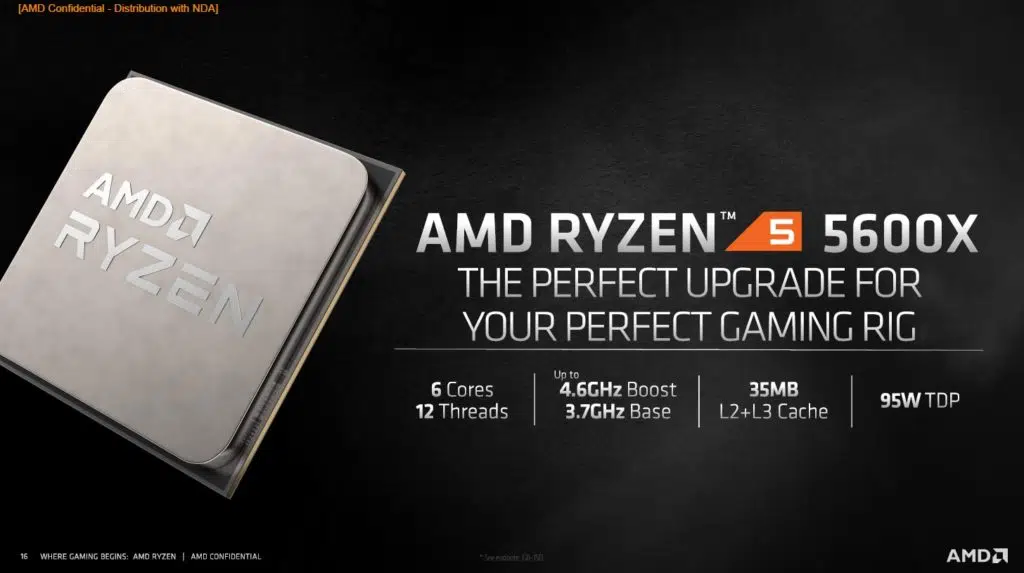
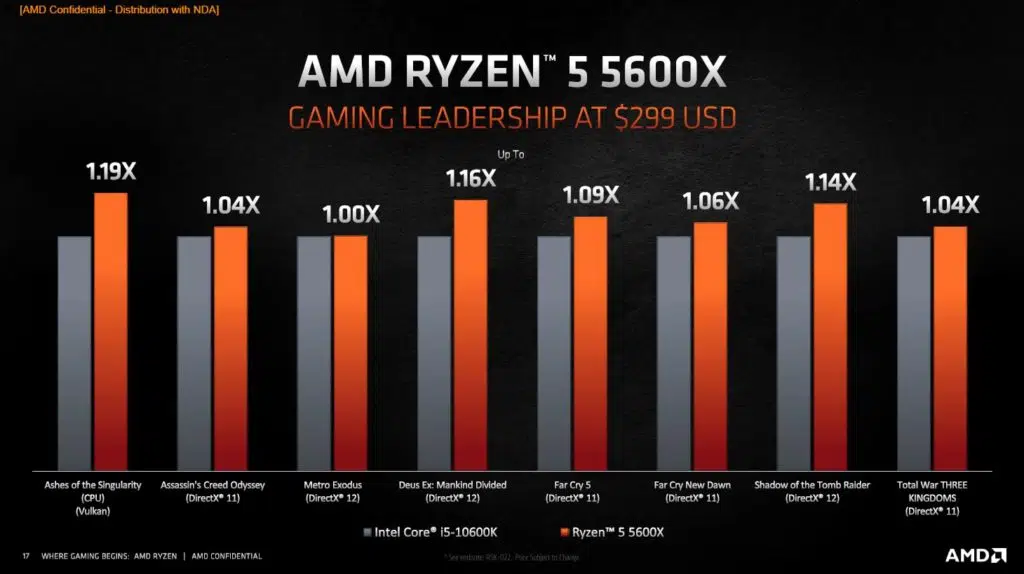
As a refresher, the AMD Ryzen 3000 series, based on Zen 2, was released in the summer to fall of 2019. The AMD Ryzen 5000 series, based on Zen 3, was released in the summer to fall of 2020. When the Ryzen 5 3600X was launched it launched with an MSRP of $249 in 2019, making it a great mainstream CPU. In 2020, AMD launched the Ryzen 5 5600X at a higher $299 MSRP. The question is, is that extra $50 worth the performance upgrade? AMD certainly thinks so, as it raised the prices on Zen 3 CPUs versus the previous generation.
Today we are going to focus on the AMD Ryzen 5 5600X performance, and compare it with the Ryzen 5 3600X. The Ryzen 5 5600X CPU is based on the newer Zen 3 architecture from AMD, which supersedes the Zen 2 architecture that the Ryzen 5 3600X was based on. This includes a re-organizing of the CCDs and CCX complexes inside the package to better optimize cache performance. For a complete overview of the Zen 3 architecture please check out the entire AMD Press Deck for Zen 3.
| Specification | Ryzen 5 5600X | Ryzen 5 3600X |
|---|---|---|
| Architecture | Zen 3 / Vermeer | Zen 2 / Matisse |
| Process Node | 7nm CCD/12nm IOD | 7nm CCD/12nm IOD |
| Cores/Threads | 6/12 | 6/12 |
| L2+L3 Cache | 3MB L2/32MB L3 | 3MB L2/32MB L3 |
| Base Frequency | 3.7GHz | 3.8GHz |
| Max Boost Frequency | 4.6GHz | 4.4GHz |
| TDP | 65W | 95W |
| MSRP | $299 | $249 |
The Ryzen 5 5600X is a 6 core CPU with SMT so that it supports 12 threads, therefore it is a 6c/12t CPU design. It is based on the AMD Zen 3 architecture and manufactured on TSMC 7nm. It has 3MB of L2 cache and 32MB of L3 cache. It utilizes 1 CCD and 1 IOD. The base frequency is 3.7GHz and the max boost frequency is 4.6GHz with a TDP of 65W (the presentation slide above has the wrong TDP listed).
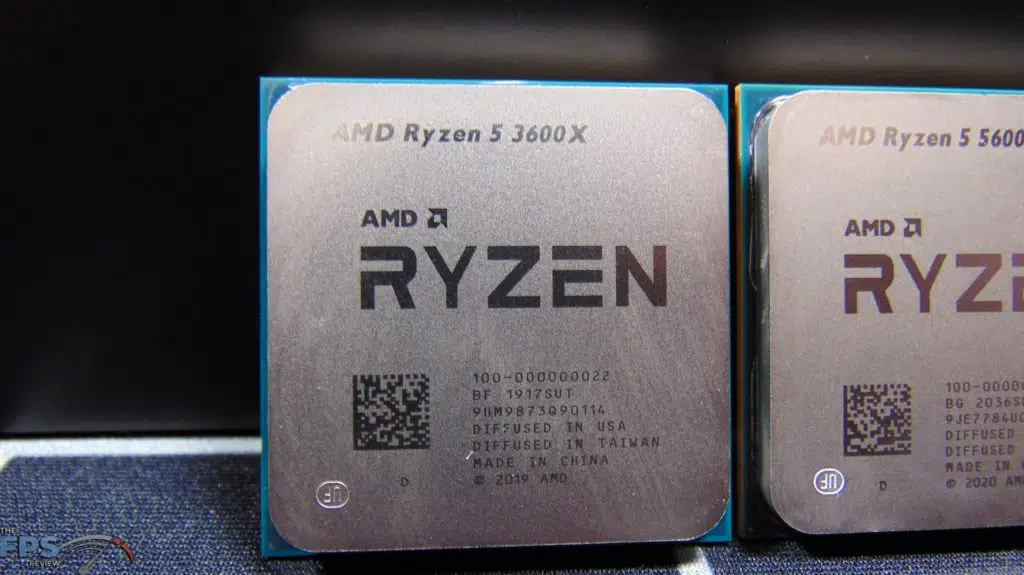
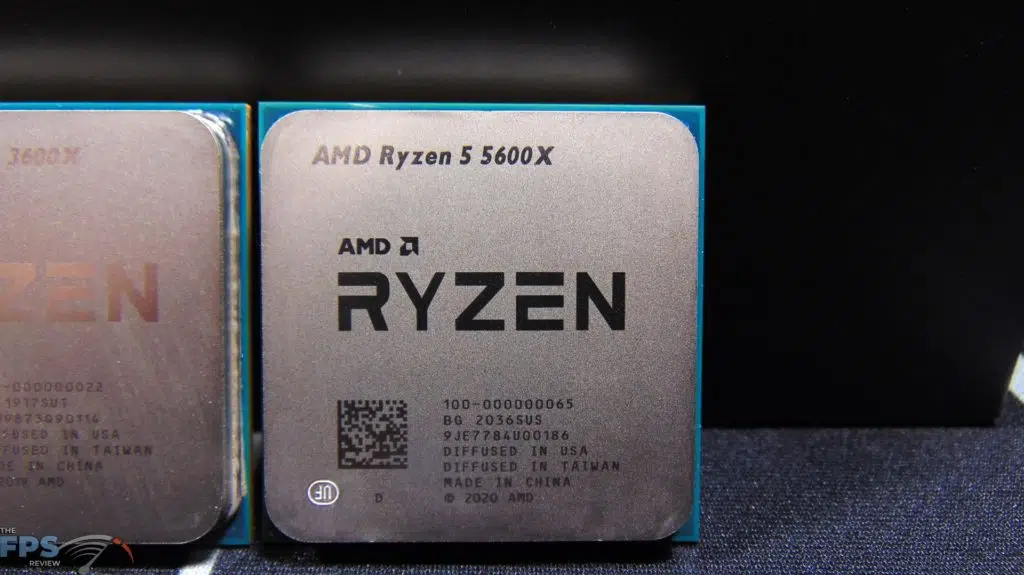
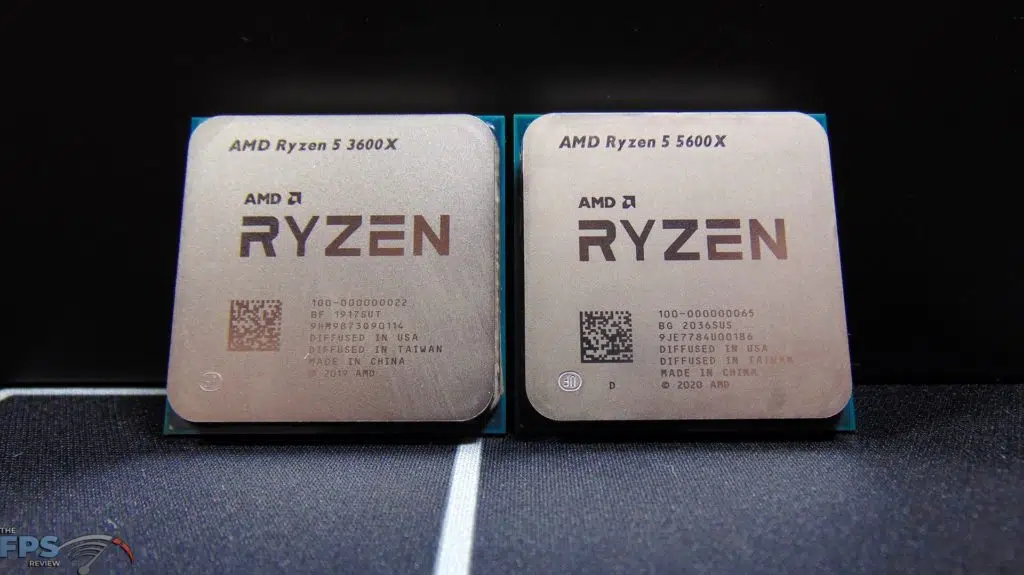

The Ryzen 5 5600X looks identical to the Ryzen 5 3600X, both being based on the AMD AM4 socket platform. The CPUs are the same size and z-height, and other for the lettering you wouldn’t be able to tell them apart.
They do, however, differ in the TDP. The Ryzen 5 3600X has a higher 95W TDP, while the new Ryzen 5 5600X sits at a TDP of 65W. This is a pretty big power saving, considering the Ryzen 5 5600X can boost higher than the Ryzen 5 3600X at 4.6GHz versus 4.4GHz. Though the base frequency is 100MHz lower on the 5600X, the boost clock is 200MHz and has a lower TDP. This could mean you won’t need as a robust cooler as the 3600X would have needed, saving you a little money on the configuration.
Another feature of the Ryzen 5000 series CPUs is the Precision Boost Overdrive or PBO support that can be enabled in the BIOS as an overclocking method increasing boost clocks by as much as +200MHz. We will utilize PBO on the Ryzen 5 5600X enabled in our BIOS as our overclocking results, as this is the official overclocking method for the CPU. You will see these results on our graphs as the “PBO” results.
Precision Boost Overdrive remains supported and is implemented as-designed for the AMD Ryzen 3000 Series processors. PPT, TDC, and EDC limits are automatically raised to match the VRM capabilities communicated by the specific motherboard’s BIOS parameters. Workloads that may otherwise be throttled by current or socket power can continue boosting until some other limiter takes effect. Users may also override boost by up to +200MHz with the AutoOC feature.
